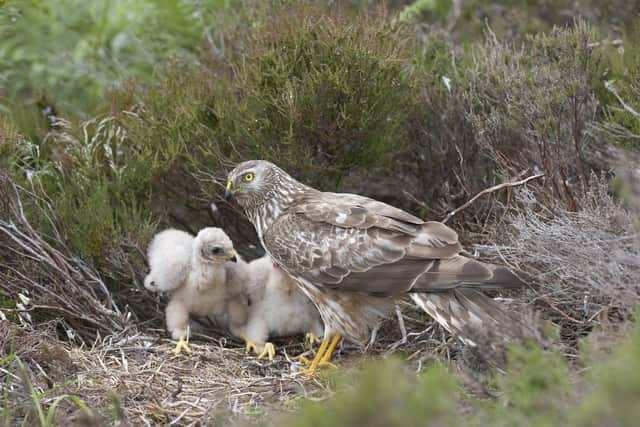RSPB warn residents to watch your step this spring
and live on Freeview channel 276
More than half of England’s most threatened breeding species nest on or near the ground, including curlew, little tern, nightjar and lapwing.
A study conducted by RSPB showed 41 per cent of people asked said they had spotted wildlife they had never noticed before near their homes between 2020 and 2021 as the pandemic made the public more aware of nature in their area.
Advertisement
Hide AdAdvertisement
Hide AdAs breeding season starts in West Sussex, the RSPB said watching your step can help protect rare breeding wildlife.


In West Sussex, beaches can be home to ground nesting birds; little tern, ringed plover and oystercatcher chicks all make homes in coastal shingle.
Mike Shurmer, head of species for RSPB England, said: “A skylark egg can be as small as 17mm, that’s around the width of a 5p piece. And when those eggs hatch, chicks can be just as well camouflaged and vulnerable. When scared, a chick’s instinct is often to stay quiet and avoid detection, so if you see an adult bird calling out in distress or trying to catch your attention, back away carefully to help protect nests from harm.”
Sara Humphrey, communications manager, said: “If you ask a child where birds nest, they are likely say a tree, hedge or nest box.
Advertisement
Hide AdAdvertisement
Hide Ad“It’s an image we’ve all grown up with but for some of our most threatened species it’s simply not true.
“Almost every natural habitat in the English countryside can be home to ground nesting birds and these threatened species are under increasing pressure due habitat loss, predators and climate change. Yet we can all help protect them from disturbance by simply following the Countryside Code and keeping to footpaths.”
Chalk downlands are home to a huge variety of specialist species, including rare ground nesting birds such as skylark and corn bunting.
For these species, the breeding season can last longer than people might think, with corn buntings still raising chicks in September.
Advertisement
Hide AdAdvertisement
Hide AdAs birds nesting on the ground are at higher risk from predators; the nests and eggs they contain are often extremely well camouflaged, making them very hard to see and avoid.
The RSPB’s conservation scientists have developed methods to help protect nesting birds from environmental threats including climate change, wildfire and sea level rise, which can be delivered through managing landscapes for wildlife.
They have seen fantastic results for species including roseate tern and stone curlew, but to protect ground nesting birds across the countryside, everyone can play a part by watching where they step.
To find out more, search #WatchYourStep on twitter or Facebook.
Advertisement
Hide AdAdvertisement
Hide AdThe RSPB works closely with partners and communities to protect wildlife across their network of over 300+ UK nature reserves and in the wider countryside.
To find out more about RSPB reserves near you or to help fund the vital work the charity does to protect wildlife, visit www.rspb.org.uk
Comment Guidelines
National World encourages reader discussion on our stories. User feedback, insights and back-and-forth exchanges add a rich layer of context to reporting. Please review our Community Guidelines before commenting.